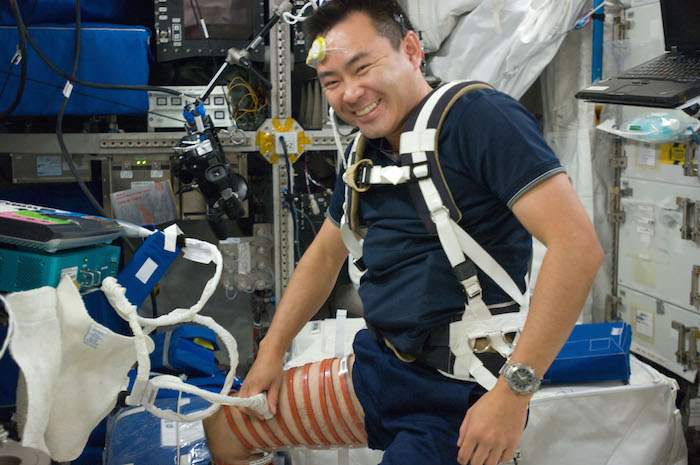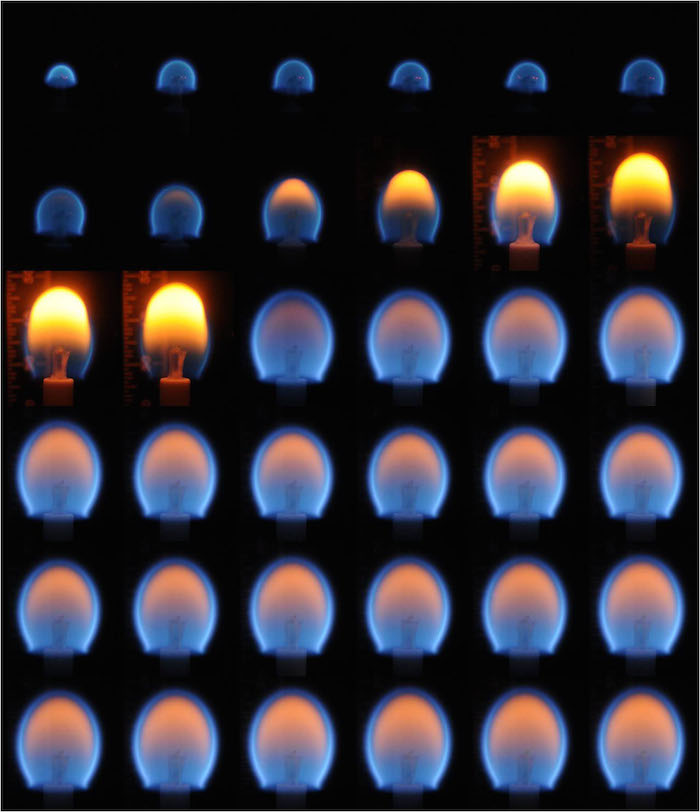.
(Highlights: Week of Dec. 28, 2015) - The crew of the International Space Station kicked off the new year with science investigations in to aging of human skin and how fabrics burn in space, both of which could have a significant impact on life on Earth.
NASA astronaut Scott Kelly retrieved the hardware for the Burning and Suppression of Solids-Milliken (BASS-M) investigation scheduled to begin within the next few weeks. Materials burn differently in microgravity than they do on Earth, and understanding these differences is crucial for maintaining safety. This NASA investigation tests 10 specially treated, flame-retardant cotton fabrics to determine how well they resist burning in microgravity.
The important observations from BASS-M experiments include flame shape and appearance as a function of airflow speed around the sample, how fast the flame develops, and flame dynamics -- pulsations and oscillations. Each textile’s ability to self-extinguish is evaluated and compared against normal terrestrial behavior. Results benefit research on flame-retardant textiles that can be used on Earth and in space.
ESA (European Space Agency) astronaut Tim Peake performed his first round of measurements for the Skin-B investigation. The ESA investigation will improve understanding of skin aging, which is slow on Earth but accelerated in space. It will provide insight into the aging process in other similar bodily tissues and could help scientists identify impacts for astronauts on future long-duration missions beyond low Earth orbit where environmental conditions are more challenging.
Peake measured the hydration level of his skin’s outer layer, the skin barrier function and the skin surface topography. The data will be compared to measurements performed before Peake began his stay on the space station. Data gathered on the station can provide insight into the mechanisms by which all organs covered with epithelial and connective tissue adapt and age over time and under the physical stress imposed by the microgravity environment. Gaining an understanding of how biological tissue can change should allow for better diagnostic and treatment on Earth.
One proven treatment to maintain the health of crew members is regular exercise on the orbiting laboratory. NASA astronaut Tim Kopra completed an ultrasound on different muscle groups for the end of his second week on the space station as part of the Integrated Resistance and Aerobic Training Study (Sprint). This NASA Human Research Program study evaluates the use of high intensity, low volume exercise training to minimize loss of muscle, bone and cardiovascular function in crew members during long-duration missions.
Ultrasound scans are used to evaluate spaceflight-induced changes in the muscle volume. Upon completion of this study, investigators expect to provide an integrated resistance and aerobic exercise training protocol capable of maintaining muscle, bone and cardiovascular health while reducing total exercise time over the course of a long-duration spaceflight. This will provide valuable information in support of the long-term goal of protecting human fitness for even longer space exploration missions. Data gathered from the investigation also may help scientists develop treatments to aid in muscle, bone and heart health on Earth.
.

JAXA (Japan Aerospace Exploration Agency) astronaut Akihiko Hoshide performs a Sprint ultrasound pre-scan during Expedition 32 on the International Space Station in August 2012. Ultrasound scans are used to evaluate spaceflight-induced changes in the muscle volume to determine the effectiveness of exercises to combat muscle and bone loss.
.

A composite image of candle flames from the Burning and Suppression of Solids (BASS) investigation on the International Space Station.
Quelle: NASA
4632 Views
